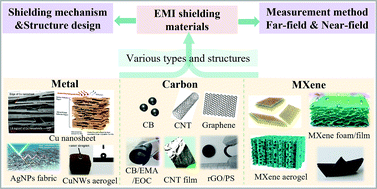Electromagnetic interference shielding materials: recent progress, structure design, and future perspective
Abstract
The rapid development of electronic equipment and the sharp increase in the demand for wireless communication have resulted in a substantial increase in electromagnetic pollution. Consequently, electromagnetic interference (EMI) shielding materials have been developed to solve the grim problem of electromagnetic pollution. However, 5G communication technology and modern electronic products demand shielding materials with higher requirements in terms of EMI shielding performance, weight, flexibility, and reliability. This review focuses on the recent research progress in the structural design, characterization, and properties of various EMI shielding materials including metal type, carbon type, and MXene type. The basic theory of EMI shielding is introduced in detail and the current testing technologies for EMI shielding effectiveness are summarized, which can help elucidate the structural design principles for shielding materials. The effect of different types of carbon materials, which are classified as zero-dimensional, one-dimensional, two-dimensional, and three-dimensional, on the shielding performance, and the corresponding shielding mechanism are discussed. Moreover, near-field shielding and its application in the field of electronic packaging are introduced. Based on our comprehensive analysis, we present the main challenges and outlook of EMI shielding materials in future research.



 Please wait while we load your content...
Please wait while we load your content...